Ijraset Journal For Research in Applied Science and Engineering Technology
- Home / Ijraset
- On This Page
- Abstract
- Introduction
- Conclusion
- References
- Copyright
Analysis of Traffic Volume and Accidents for Rolling Barrier System at NH06 Khamgaon
Authors: Prof. Ruchira S. Ingole, Mr. Pritesh R. Hage, Mr. Sattyam V. Giri, Mr. Manish G. Dhaye, Mr. Vivek Kalamkar, Mr. Nikhil Shinde, Miss. Bahgyashree Tumbade
DOI Link: https://doi.org/10.22214/ijraset.2022.42462
Certificate: View Certificate
Abstract
The government is always looking at the latest technology that can ensure safety of road users, as outlined in the construction industry transformation plan. A small Korean manufacturing company invented a new concept longitudinal barrier, (The Rolling Barrier) which had continuous pipes covered with urethane rings. This study aims to evaluate the effectiveness of the “Rolling Barrier” and to understand the Rolling Barrier’s characteristics of crash cushioning, how to correct the vehicles running direction and the required strength of barriers. They convert that impact energy into rotational energy to propel the vehicle forward rather than potentially breaking through an immovable barrier. When a car hits the barrier, the rotating barrel converts shock from the vehicle to rotational energy. Upper and lower frames adjust tires of large and small vehicles to prevent the steering system from a functional loss. The Rolling Barrier can be effectively used in curved roads sections, ramps, medians and entrance or exit ramps in parking garages. In this paper, the description and studies of Rolling Barriers are elaborated. The latest emerging technologies for safety of road is focusing on finding new ways/methods for reducing accidents and reducing damage due to accidents. In a study it has been revealed that many accidents occur at horizontal curves. By using rolling barriers on horizontal curve, number of deaths, damage to vehicle or injury to human body can be minimized. Use of these rolling barriers have proved to be effective. It has been used in many developed countries and it should be used in India to minimize accidents.
Introduction
I. INTRODUCTION
Road accident one of the leading causes of human death. Worldwide, yearly over 1.3 million people are killed in road traffic accidents 3,500 person daily. This is 8th leading cause of death. Road traffic deaths are accounted for 23% of all injury deaths worldwide. Every year, approximately 1.25 million people die as a result of a road traffic crash. These all are all types of crashes but there have another type of crash or accident. This type of crash or accident occurs at hilly area, roadside, at the median. To prevent vehicles from driving off the road, strong metal bars, commonly referred to as guardrails, run along a road's edge. There giving RCC barrier to prevent the head crashes. Sometimes these barriers can’t give guarantee a driver's’ safety. Sometimes provides some RCC round pillar nearly 3’ height in hilly areas to prevent the vehicles would not fall from hill but it cannot give guarantee the safety of vehicles as well as passengers. For safety reason and saving the human lives we are introducing the rolling barrier.
Rolling barrier is a type of a road barrier. There have many round shape plastics elements (nearly like as tire) that’s should set up serially one by one that’s connected by a stainless steel. The round shape elements can roll. When a vehicle hits the rolling barrier it will roll and divert the impact force rotate to forward. For this the crash vehicles have to remain in the same area though that was hit but it can save the lives of passengers. If there have a RCC barrier it cannot divert the impact force into forward and would try to break it and can go outside the road. If its hilly area, then the vehicle can fall down or vehicle can go opposite side of the road then another vehicle can hit the vehicle which is coming from opposite side. Both cases are can take lives of passengers. The rolling barriers do more than absorb impact energy. They convert that impact energy into rotational energy to propel the vehicle forward rather than potentially breaking through an immovable barrier. When a car hits the barrier, the rotating barrel converts shock from the vehicle to rotational energy. Upper and lower frames adjust tires of large and small vehicles to prevent the steering system from a functional loss. The vehicle crash test was performed on three different vehicles and the rolling barrier satisfied all the criteria such as small car, large car, bus. To minimize the number of accidents, a company called ETI (Evolution in Traffic Innovation) designed “Rolling Barrier System”.
Guido Bonin et al., has suggested the use of road safety barriers with short elements of light weight concrete. They also suggest the replacement of the conventional concrete barriers by the short elements of light weight concrete citing the chances of higher dissipation of energy, thus reducing the overall dynamicity and helping in maintaining a good containment capability. They have made use of the finite element models of the vehicles used and that of the actual portable concrete barrier to help them in the process of simulation and also emphasize on solving the barrier problem using computational mechanics with finite element models, which try to reproduce real time situations on the computer. However, due to the rigidity of a material like concrete can have repercussions like severity of impact leading to harsher consequences? Also, during the use of the dummy model, though the analysis validity is good, the behaviour with a different model can be different. Such uncertainty during the virtual phase can prove catastrophic in the real world. Also, as we can see from the Table no.1.1 below that instead of preventing accidents, the concrete barriers, guard rails and the likes have fuelled it.
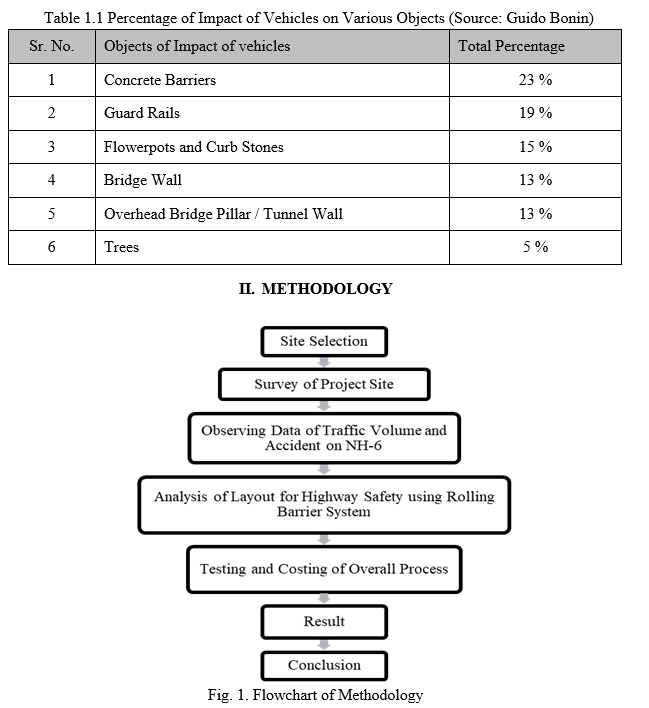
A. Site Selection
NH 06 Khamgaon Nandura Road, to Parkhed Phata Survey of selection site is done by the data available by NH 06 depending on that basis a small section of curve path is been selected as a project site for designing Rolling barrier having speed limit 60kmph Vehicle movement on the NH 06 were very high and frequently all sort of vehicles pass through so many accidents do occur the place is more curve therefore using roller barrier will reduce the accident rate.
B. Survey of Project site
There is a sharp curve between Hotel Jugnu Khamgaon to Hotel Pardesi Parkhed Fata. The categories of vehicles include tempo, auto, and different types of two-wheelers, cars, mini-truck, bus, motor cycle, tanker, truck and bus. The information available for accident studies is the FIR (First Information Report) lodged in the police station. The data from these records of last six years (2015 – 2021) were extracted from the FIR record field under IPC no.
- Date and Time of occurrence of accidents
- Location of accident.
- Details of accident i.e., injuries, fatalities and property damage.
Type of Hitting Vehicle.
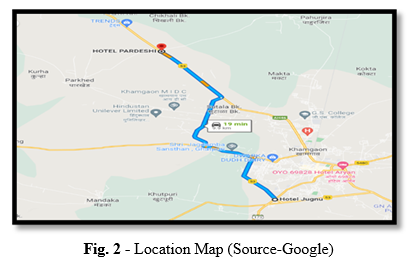
C. Observing Accident Data on NH-06
National Highways are the arterial roads of the country for inter-state movement of passengers and goods. They traverse the length and width of the country connecting the National and State capitals, major ports and rail junctions and link up with border roads and foreign highways. The total length of NH (including expressways) in the country at present is 1,32,499 kms. While Highways/Expressways constitute only about 1.7% of the length of all roads, they carry about 40% of the road traffic. Accident details during 2015-2021 on this road section are shown. Accident data were collection is year wise form each police station records and then sorted out.
1. Working Principle: As we can see from the number of fatal accidents on the expressway, this prevailing customary system has proven to be substandard. Whereas, the rolling barriers not only absorb the impact energy but also convert it into rotational energy, assisting the vehicle to stay on track and prevent overturning. As we can see from Fig that as soon as an automobile swerves from the actual path and hits the barriers laterally at any angle, the rollers convert the impact energy into rotational energy by rotating with the impact. The rotational energy not only helps to cut down the impact of the collision but also helps to propel the vehicle forward rather than potentially breaking through an immovable barrier.
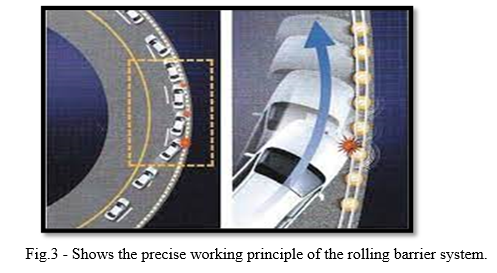
D. Analysis
The road accident characteristics studied in this study include their total number, cause of accidents, nature of accidents and type of injury, type of vehicles involved and time of accidents.
- According to the type of injury: Whenever a road accident occurs on the road, mainly four types of accidents i.e., fatal injury, serious injury, minor injury and non-injury are said to happen, depending upon the severity of injury.
- According to the nature of accident: The nature of road accidents that occur on the road can be due to vehicle overturning, head on/rear end collision, hit and run, right turn collision, right angled collision, brush/side swipe, skidding of vehicle, etc.
- According to cause of accident: A road accident can occur due to many reasons; it can be the fault of driver of motor vehicle/driver of the other vehicle or the accident can take place due to defect in the condition of motor vehicle/road condition.
- According to the type of vehicles involved in accident: The severity of accident depends upon the type of vehicle involved in the accident. There are more chances of fatal accident taking place in case of heavy vehicles involved in the accident as compared to light vehicles.
- According to time of accident: Mainly, we divide road accidents according to time period in two categories. The first one is from 10:00 a.m. to 2:00 p.m., the second from 5:00 p.m. to 6.00 p.m. It is observed that more accidents take place during day time than night time. This may be attributed to a smaller number of cars and 2-wheelers during night. Though total number of PCU's remains almost the same during day and night, but total number of vehicles is less during night time.
Accident Rate Calculation –
Accident Rate (2015)
Accident Rate = M/L
Where, M =Total no of accident
L = Road length
Accident Rate = 28/8
Accident Rate (2015) = 3.50
Similarly,
Accident Rate (2016) = 4.12
Accident Rate (2017) = 4.25
Accident Rate (2018) = 4.50
Accident Rate (2019) = 2.87
Accident Rate (2020) = 0.25
Accident Rate (2021) = 1.75
Table 2. Accident Rate (Source-NHAI Office)
|
Name of Road |
Length |
No of Accidents in a Year |
|
|
No of Accident in Year |
Accident Rate |
||
|
2015 |
8 |
28 |
3.50 |
|
2016 |
8 |
33 |
4.125 |
|
2017 |
8 |
34 |
4.25 |
|
2018 |
8 |
36 |
4.50 |
|
2019 |
8 |
23 |
2.87 |
|
2020 |
8 |
2 |
0.25 |
|
2021 |
8 |
14 |
1.75 |
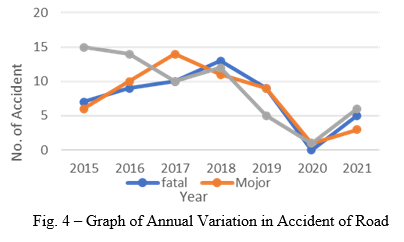
E. Testing and Costing
- Testing: It has been carried out by KSI global to compare normal and RB to measure the degree of damage imparted to the barrier during a vehicle impact of the crash test (test 1). It was observed that the conventional barriers experienced more damage in comparison to RB. In a similar crash test (test 2) a comparison is done between passenger car and heavy vehicle impact to Rolling barrier. It was seen that impact of passenger car delivered no damage to the RB, while slight damage is recorded in case of heavy vehicle.
- Costing: Each roller of this system costs near about INR.3200.The rollers system costs approximately 18 lakhs per 100 meter of roadway. The rolling safety barriers has self-luminescence so, it reduces the cost of luminescence’s in night time After several crashes the rollers can be easily replaced with new rollers in low cost hence, whole system is not affected by crashing.
III. ACKNOWLEDGMENT
We would like to show our gratitude to the Prof. Ruchira S. Ingole, Mauli Group of Institutions College of Engineering and Technology, Shegaon for sharing their pearls of wisdom with us during the course of this research
Conclusion
1) Accidents are the error of the human\'s while using motor vehicles and also nature creates problems like rain causing slippery roads. Fog causing low visibility, etc. Ultimately life is more precious than vehicles but when it becomes to rolling Barrier system usage, it saves life and also reduces maximum damage to vehicles leading to saving of both financial as well as human resources. 2) Rolling Barrier reduces the impact of collision, redirects the path of vehicle, convert impact energy into rotational energy. This reduces accidents and saves lives. 3) The Rolling Barrier system invented by Korean company is very expensive. So, if the material is replaced with low cost than aluminum string but equivalent to its strength. We can give yellow color top rail and bottom rail so that they can be visible at day time as well as night time. We can also replace the expensive LED lights with cheap radium paper which reflects the light falling on it at night and it will not also trouble in daytime. We can apply red colored radium paper on at same places at top rail and bottom rail and also on rolling Barrier. 4) By implementing RB in the cities India will come in that group of countries who have already using this technology. The Indian highways records large number of accidents and this technology will definitely elucidate this problem in a highly efficient manner. 5) On this NH-06 accidents are increasing day by day as per the data mentioned above the large no. of accidents occur on horizontal curves 42% of collision is with barriers. The conventional barrier protect other objects from collision but it damages the vehicle heavily and it may even cause death of passenger of vehicle. The use of rolling barriers can prevent the damage of vehicle and loss of lives.
References
[1] Nagadarshan Rao, Nagarajan Bhargav, Nimish G Janani, Jaydeep N Maravia, 2021, “An Alternative Method for Barriers: Rolling Barrier system”, International Journal of Latest Engineering and Management research, Pg. 37-41 [2] Rao et.al 2021, “Rolling Barriers: Emerging Concept to Reduce Road Accidents: An Indian Perspective’s Siddhanth Institute of Technology, Tukur, Karnataka. [3] Vivek Lodhia 2021,” Emerging technologies for safety of road “: International Journal of Engineering Applied Sciences and Technology, 24-27. [4] Yogesh Chawan 2021,” Highway Safety Using Rolling Barrier”: VIVA TECH IJRI Pg. 45-60. [5] Yadav Manish, Kaintura Vikram, 2020, “Safety Guard Highway Rolling Barrier”, IJSRD - International Journal for Scientific Research & Development|, Pg. 171-181 [6] Singh, A.P, Agarwal P.K, Sharma A., “Road Safety Improvement: A Challenging Issue on Indian Roads”, International Journal of Advanced Engineering Technology, Vol 2, Issue 2, June, 2011, Pp 363-369. [7] Kyung-Whan Kim,” Guidelines for Installation and Management of Road Safety Facilities” KSCE Journal of Civil Engineering, 53-56 [8] Zahoor Sarver, Sharma Tarun, 2018, “Study of rolling barrier system”, International journal of information and computing science, Pg. 212-217 [9] B. Mahendra Reddy, M. Sri Priya, 2017, “New Roller Barrier System Management and Efficiency on Highways”, International Journal of Engineering Science and Computing 07- 14415-14418. [10] Saxena Harshit, 2020, “Rolling barriers: technology to reduce accidents on roads mainly on hilly areas horizontal curves”, International Research Journal of Modernization in Engineering Technology and Science, Pg. 154-157 [11] Evaluation of Accidents on Curves in Ghats Sections, Priya Godase1, Rutuja Kolekar2, Shrutika Gurav3, Abhilasha Thakur4 Pallavi Kharat, International Research Journal of Engineering and Technology (IRJET) [12] Chitransh Srivastava, Nikhil Acharya, fervez Jaffer, Sachin Bhatt.\" limitation of Collision avoidance system for hair pin bends in Ghats using proximity sensors\". Manipal University. [13] MR. Siddharth Gupte “A Review of Literature on Geometric Design of Highway”. Assistant Professor Transportation Engineering, Parul University, Vadodara, Gujarat(2018). [14] Marco Montoya-Alcaraz “Road Safety Analysis of High-Risk Roads” Faculty of Engineering, Universidad Autónoma de Baja California, Mexicali 21280, Mexico(2020). [15] Guozhu Cheng, “Research on Highway Roadside Safety” School of Transportation Science and Engineering, Harbin Institute of Technology, Harbin 150090,China(2021). [16] “Road safety audit: a case study for Wardha road in Nagpur city” Manish.D. Katiyari, Prof. S. D. Ghodmare, M-Tech (Trans Eng., Research Scholar). [17] Dumbaugh Eric.“Design of safe urban roadsides”. Georgia Institute of Technology, Atlanta(2006).
Copyright
Copyright © 2022 Prof. Ruchira S. Ingole, Mr. Pritesh R. Hage, Mr. Sattyam V. Giri, Mr. Manish G. Dhaye, Mr. Vivek Kalamkar, Mr. Nikhil Shinde, Miss. Bahgyashree Tumbade. This is an open access article distributed under the Creative Commons Attribution License, which permits unrestricted use, distribution, and reproduction in any medium, provided the original work is properly cited.
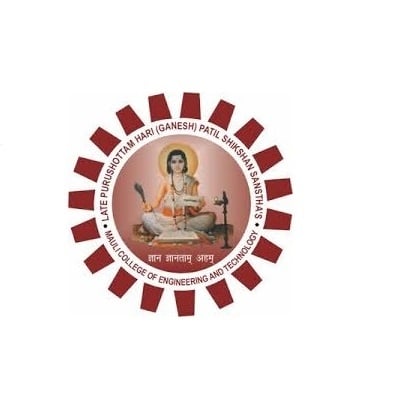
Download Paper
Paper Id : IJRASET42462
Publish Date : 2022-05-10
ISSN : 2321-9653
Publisher Name : IJRASET
DOI Link : Click Here
 Submit Paper Online
Submit Paper Online

